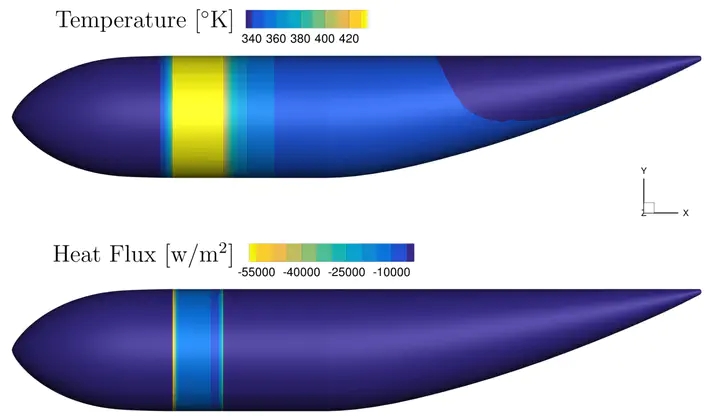 Convective Heat Transfer of X-57 Nacelle
Convective Heat Transfer of X-57 Nacelle
Abstract
The X-57, an electric aircraft technology demonstrator, utilizes twelve small electric motors on the leading edge of the wing to improve the high-lift performance of the aircraft at takeoff and landing. During the remainder of the flight, these high-lift motors are shut off and their nacelles only serve to add drag to the aircraft. Consequently, we aim to improve the efficiency of the X-57 by modifying the shape of the nacelles to reduce drag through the use of aerodynamic shape optimization. However, when doing optimization one must be careful to incorporate all of the relevant constraints to achieve a practical design. The thermal management of waste heat produced by electric propulsion is a critical issue in electric aircraft design. Thus to incorporate this relevant constraint, we will build upon our past work in aerodynamic shape optimization by incorporating thermal analysis into the optimization. In this work, we examine how the shape of the X-57’s high-lift motor nacelles can be modified to reduce drag while maintaining or improving its ability to reject heat using high-fidelity aerodynamic shape optimization. To study the effect coupling between conduction and convection has on the optimization results we implemented a convection-only and a conjugate heat transfer model. The results of our study show that for the anticipated heat transfer constraint of 500 Watts or less the design of the high-lift nacelle is not constrained by the thermal load and that the initial design could not be significantly improved increasing the size of the cross sections. However, if the motor is required to transfer 550 Watts, modifications to the shape that increase drag would need to be made to meet the constraint. The difference between results obtained using the convection-only and a conjugate heat transfer model was found to be insignificant for this problem. Finally, the results of the study indicate that a decrease in the cross-sectional diameter of the spinner portion of the nacelle could be used to both decreases the drag of the nacelle and improve its ability to reject heat.